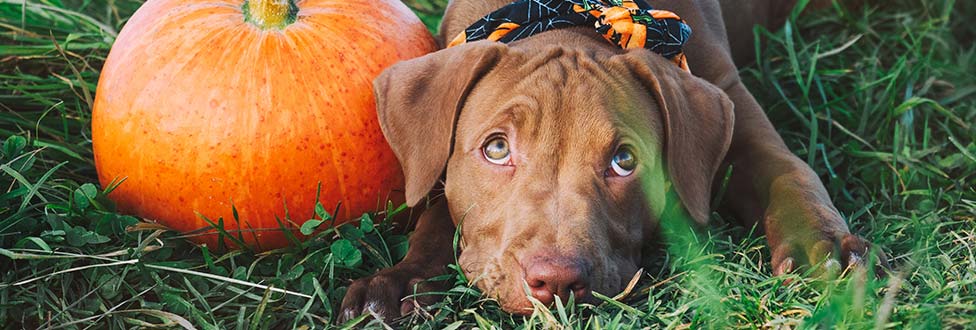How to Prepare Your Pet for Spooky Season
In Massachusetts, Halloween means busy city streets filled with trick-or-treaters, neighborhood block parties, and plenty of creative costumes. While it’s a fun and spirited time for people, the holiday can be overwhelming—or even dangerous—for pets. With a little planning, you can help your four-legged family members stay safe and comfortable while you enjoy the festivities.
4 Tips to Protect Your Pets This Halloween:
- Keep candy and chocolate out of reach. The bowl of candy that we make easily accessible for tiny trick-or-treaters is also at paws-length for our pets. Even small amounts of chocolate, xylitol (found in sugar-free candy), and caffeine is toxic to dogs and cats and can cause seizures, liver failure, and even death. If you suspect your pet has eaten something dangerous, call your veterinarian or the ASPCA Poison Control Center at (888) 426-4435 right away.
- Be careful with decorations. If your goal is to create the perfect spooky ambiance for all the Halloween festivities, keep in mind that many decorations are not pet-friendly. Faux spider webs, glow sticks, and plastic toys can be harmful if swallowed. Lit candles or jack-o-lanterns can be knocked over by curious pets, leading to burns or even fires.
- Create a calm space. The doorbell constantly ringing, a flurry of strangers in costumes, and loud noises can overwhelm pets- especially those who are typically skittish or anxious. Set you cat or dog up in a quiet room with their favorite toys and a TV or white noise to help ease their stress.
- Check your pet’s ID. With doors opening and closing all night, there’s a risk of pets slipping outside. Make sure their ID tags and microchip information are up to date so you can be reunited quickly if they get lost.
Halloween can be a wonderful holiday for the whole family—but for pets, it comes with hidden risks. By keeping treats out of reach, decorating with care, reducing stress, checking IDs, and being mindful about costumes, you can ensure your pets stay safe and comfortable. With just a few simple precautions, the holiday can be fun, festive, and worry-free for everyone.
Carve Out Some Fun This Halloween!
Download our free pumpkin carving templates featuring cute animal designs.

